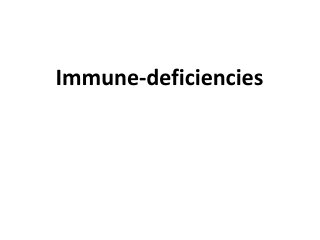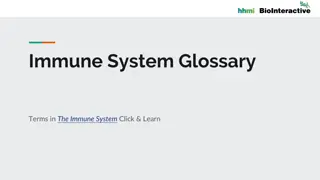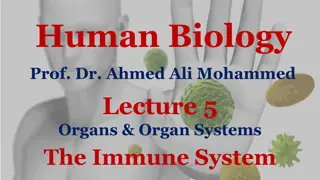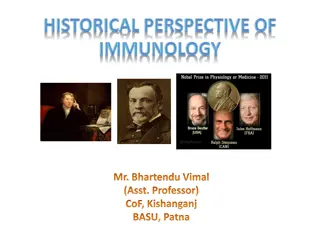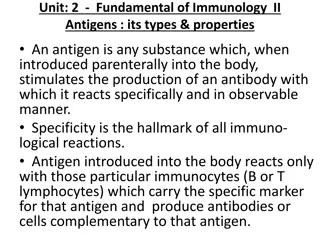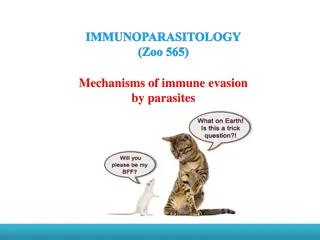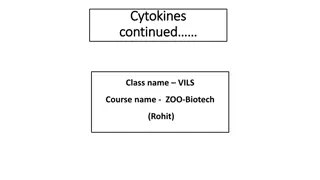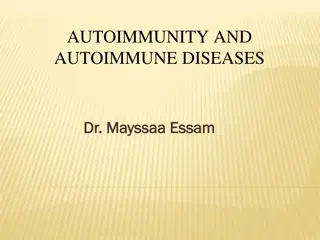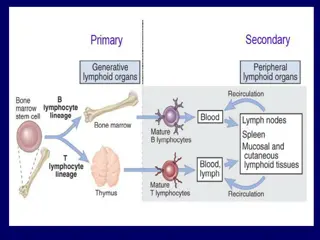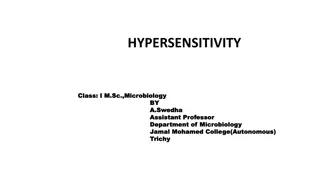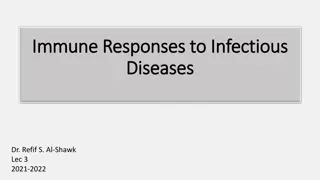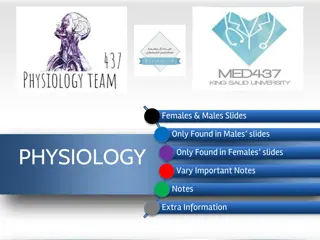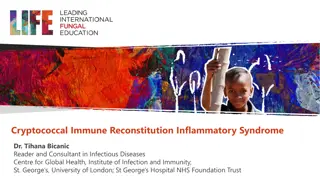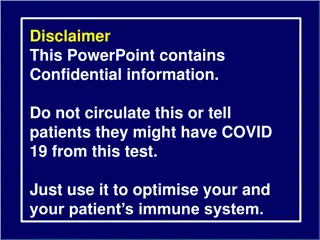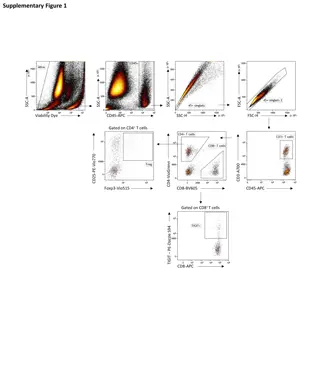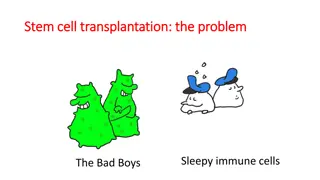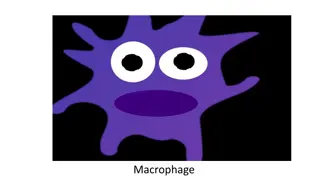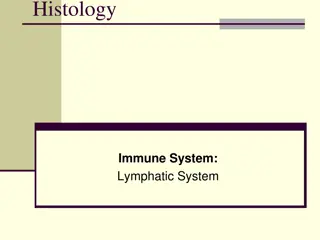The Immune System
The immune system is our body's defense mechanism against infections and diseases, consisting of two main arms - the innate and adaptive immunity. The innate immunity serves as the initial defense line, while adaptive immunity provides a tailored response to specific threats. Various components like phagocytic cells, inflammation, fever, natural killer cells, and protective proteins work together to protect our body. The system can distinguish between harmful and harmless substances through Pattern Recognition Receptors (PRR).
Download Presentation

Please find below an Image/Link to download the presentation.
The content on the website is provided AS IS for your information and personal use only. It may not be sold, licensed, or shared on other websites without obtaining consent from the author.If you encounter any issues during the download, it is possible that the publisher has removed the file from their server.
You are allowed to download the files provided on this website for personal or commercial use, subject to the condition that they are used lawfully. All files are the property of their respective owners.
The content on the website is provided AS IS for your information and personal use only. It may not be sold, licensed, or shared on other websites without obtaining consent from the author.
E N D
Presentation Transcript
Assist. Professor Dr. Sinan Bahjat M.B.Ch.B., M.Sc., F.I.B.M.S. Dr. Sinan Bahjat
The main function of the immune system is to prevent diseases arms: the Natural Acquired prevent or or limit limit infections infections and fight fight diseases. Our immunity is composed of two Natural (or Innate) Acquired (or adaptive Innate) arm and the adaptive) arm.
The Innate immunity is considered as the first and second lines of defense against foreign adaptive immunity is the third line of defense. subjects in our body, while the
The first against first line line of of defense microorganisms is the intact skin and mucous membranes, with physical mechanical barriers. defense the along other and many
If the micro breach micro- - organisms this line and enter the body, then the innate immune (second defense) to invaders. organisms innate arm immune (second defense) is is available destroy arm of of the system line available the system line of of the
phagocytic macrophages, dendritic cells). Inflammation; which is one of the important mechanisms of defense against diseases. Fever; which can change the environment of the invading microorganisms. cells natural (i.e. granulocytes, cells, killer and
Protective system proteins and interferons. Natural killer cells; which are non- specified lymphocytes that can attack the non- self subjects. proteins; like the complement
The Innate immune system has the ability to distinguish between non- self antigens (i.e. response) which can invade the body from our self antigens. This is performed through a specific receptors called Pattern Recognition Receptors (PRR proteins that can elicit an immune PRR).
The components of the innate arm are preformed and fully active, and they can function microorganisms. immediately upon entry of the
The ability of the innate arm to kill microorganisms is not specific. For example, a neutrophil can ingest and destroy many different kinds of bacteria.
Highly specific protection is provided by the adaptive system several days for this arm to become fully functional. adaptive (acquired system (third (acquired) ) arm (third line arm of defense) ), but it takes of the the immune immune line of of defense
The two components of the adaptive arm are cell mediated cell- -mediated mediated (humoral mediated immunity (humoral) ) immunity immunity and immunity. . and antibody antibody- -
Adaptive antigen- antigen recognized. recognized, creates an army of immune cells specifically designed to attack that antigen. immunity specific first Once the refers mainly to immune must an adaptive response. processed antigen immune The and been system be has
Adaptive immunity cells also includes a "memory" against a specific antigen more efficient. that makes future responses
Unlike the innate immune system, the adaptive immune system relies on fewer types of cells to carry out its tasks; the B cells and the T cells. Both are lymphocytes that are derived from specific types of stem cells present in the bone marrow.
After they have been made in the bone marrow, they need to mature and become activated. Each type of cell follows different paths to their maturation.
The T-cells differentiation occurs in the Thymus gland (mainly into helper T- cells and cytotoxic T- cells), and have a specific receptor for a fragment of antigen.
Cytotoxic T-cells contain a surface protein called CD8. These cells can destroy pathogen infected cells, cancer cells, and foreign cells (e.g. contain a surface protein called CD4 and act by immune systems. transplanted organs). Helper T-cells regulating both cellular and humoral
The main functions of cell-mediated immunity (CMI) are to kill virus-infected cells and to inhibit organisms such as fungi, parasites, and certain intracellular bacteria such as Mycobacterium tuberculosis. CMI can also kill cancer cells that often form new antigens recognized as foreign. on their surface which are
The humoral component of the adaptive immunity is also called Antibody- mediated immunity . found in the humors (i.e. body fluids) like antibodies, in addition to cytokines. It involves substances that are
The B- cell is the one that is responsible for producing antibodies after a process called depends mainly on detection of antigen by the aid of helper T-cells. Differentiation . This process
The main functions of antibodies are (1) to neutralize opsonize phagocytize. Opsonization is the process by which immunoglobulin G (IgG) antibody and the C3b component of complement enhance phagocytosis. neutralize toxins opsonize bacteria, toxins and bacteria, making them easier to and viruses viruses and (2) to
Other component of the humoral immunity is the cytokines, which are small proteins important Interleukins and Interferon). in cell signaling (e.g.
They exhibit remarkable diversity can respond to millions of different antigens) They have a long memory respond many years after the initial exposure) They exhibit exquisite specificity actions are specifically directed against the antigen that initiated the response) diversity (i.e., they memory (i.e., they can specificity (i.e., their
Macrophages participate in both arms of the immune response. They are considered as a bridge between the two arms. As part of the innate arm, they ingest and kill various microbes. They also present antigen to helper T cells, which activation of the adaptive arm. and dendritic cells is the essential first step in the


